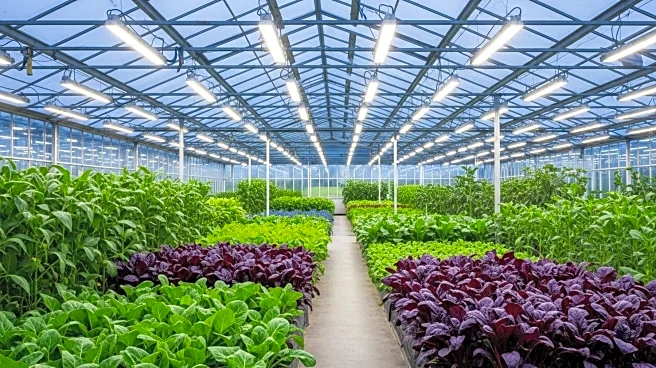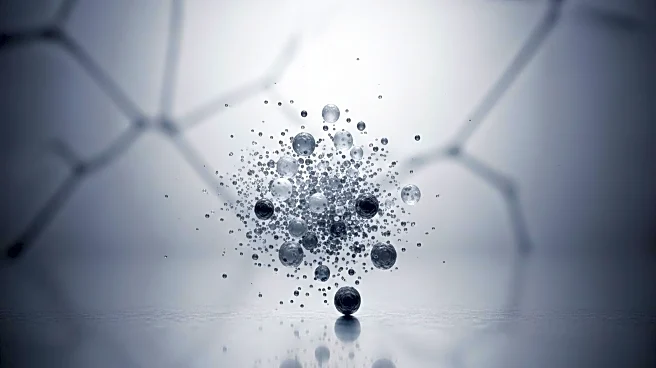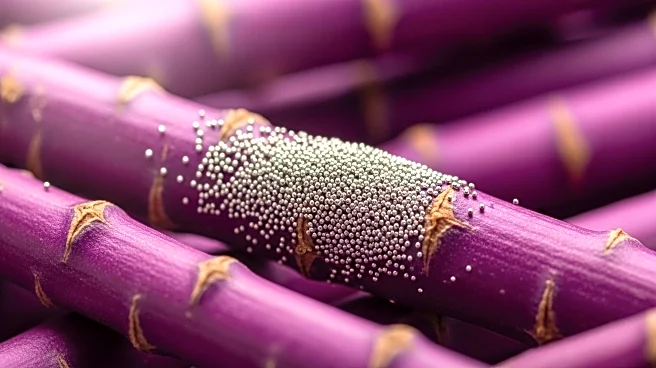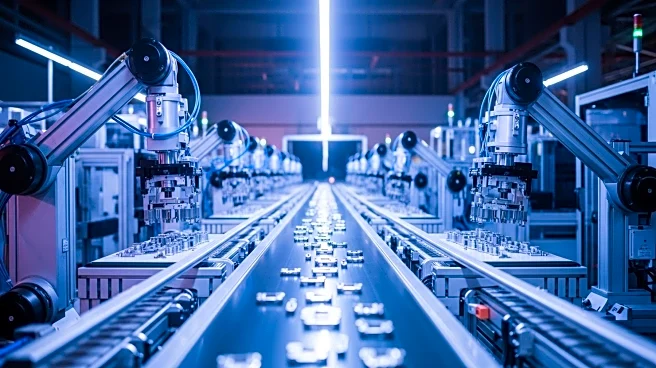What's Happening?
An international team of researchers has made significant strides in understanding the efficiency of biological motors, specifically the F1 motor involved in ATP synthesis. The study focused on the F1 motor from Bacillus bacteria, examining how it spins to produce ATP, the universal energy source for cellular activities. Researchers applied two different methods to spin the motor: constant torque and angle clamp. The angle clamp method proved to be more efficient, minimizing energy waste by maintaining a steady motion. This research, published in Physical Review Letters, could inform the design of artificial nanomachines, potentially leading to more energy-efficient devices in various applications.
Why It's Important?
The findings have implications for the development of artificial nanomachines and molecular motors, which could benefit industries ranging from medicine to manufacturing. By understanding the mechanics of biological motors, scientists can design devices that mimic their efficiency, potentially reducing energy consumption and improving performance. This research also contributes to the broader field of nanotechnology, offering insights that could lead to advancements in energy management at microscopic scales.
What's Next?
While the study provides valuable insights, it was conducted in vitro, meaning further research is needed to understand how these motors operate within living cells. Future studies may explore the natural complexity of these systems and how they interact with other cellular components. Additionally, the angle clamp method, although efficient, is a theoretical concept not found in nature, suggesting potential areas for innovation in artificial motor design.
Beyond the Headlines
The research highlights the importance of interdisciplinary collaboration, combining experimental techniques with theoretical models and computer simulations. This approach not only advances scientific understanding but also fosters innovation in technology development. The study underscores the potential for biological systems to inspire technological solutions, bridging the gap between natural and artificial efficiency.










